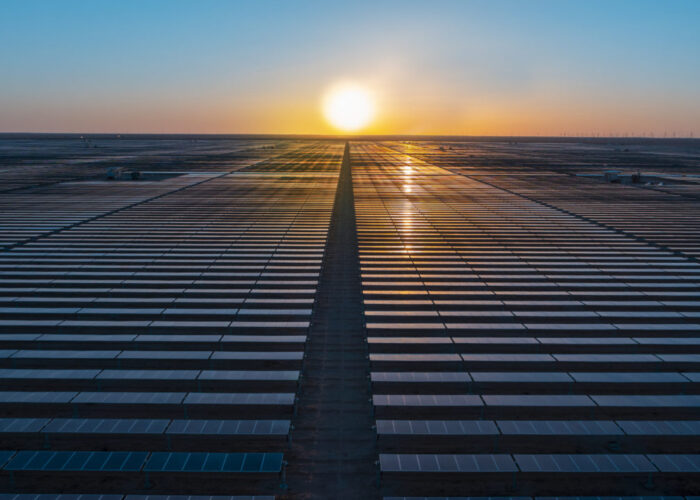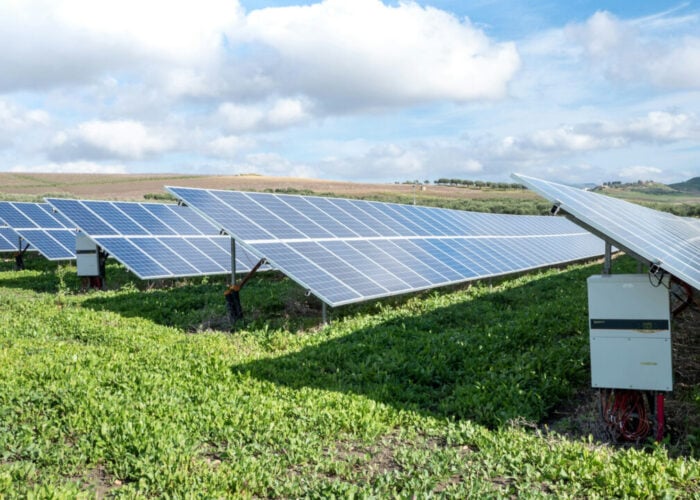Net metering is becoming an increasingly divisive issue in the US, with a dividing line as distinct as night and day. Solar companies and their customers count their sunshine dollars earned or saved – utilities count their revenue losses.
For residents who have either had the money to install systems 1MW or smaller, or have been able to make the most of assistance through schemes such as the wildly successful California Solar Initiative, reversing the metre when systems produce excess power, has been a disappointment.
Unlock unlimited access for 12 whole months of distinctive global analysis
Photovoltaics International is now included.
- Regular insight and analysis of the industry’s biggest developments
- In-depth interviews with the industry’s leading figures
- Unlimited digital access to the PV Tech Power journal catalogue
- Unlimited digital access to the Photovoltaics International journal catalogue
- Access to more than 1,000 technical papers
- Discounts on Solar Media’s portfolio of events, in-person and virtual
Utilities will credit the customer's next bill at retail rate. But what utilities won't do is pay customers the retail value for the energy exported to the grid.
Forty-three states have net metering policies but they vary dramatically between states. Wyoming's net metering limit is a paltry 25kW, Arizona has no limit while the California Public Utilities Commission has capped net meters to 5% of utility's peak demand – the state is at around 2.8% of this cap.
The CPUC last year rejected a general rate case brought by San Diego Gas & Electric General, which sought to scrap the cap. Transmission, distribution and generation still have to be paid for as the customer base shrinks, rates can only go one way, goes the utility argument.
Although the utilities lost this battle in January, they will likely continue to wage a quieter war on this “silent subsidy”.
Kerinia Cusick, senior director of government affairs at SunEdison, recently told the PV America West conference in San Jose, that Virginia introduced legislation to allow Dominion Virginia Power to collect a standby charge from customers with systems larger than 10kW – even though the utility only has one customer in that category.
“Virginia is a case study in what not to do with public policy,” she said. “Utility that brought the case in Virginia said net metering is having a big impact on us financially. But they had one customer in that class.”
Misinformation generated by utilities and amplified by media reports of the “rich soaking up solar subsidies” and soaring utility bills as those without solar shoulder the rate burden of those freeing themselves from the grid.
“The press can't be relied upon to get something as controversial as net metering right,” said Cusick. “But there is a lot of confusion out there and a lot of misdirection about messaging that's been happening on this topic.
“The real issue is that the revenue is going down. All the rest of this is distraction. This can be a problem for utilities so maybe we should be talking about that issue rather than some of the other issues.”
Solar installations should be viewed from a similar perspective to energy efficiency measures, she said. “Is it really that different for me to get solar panels than it is to get rid of that second 1970s vintage freezer that is sitting in my garage. How different is that from a policy perspective? Is my neighbour subsidising me if I get rid of my refrigerator? No probably not. So how is this different from solar?
“This is a very big and scary argument to have. The sky isn't falling in. There's this impression that there are huge subsidies being handed out.”
Net energy metering is a subsidy but it really is an issue of rate design, said David Rubin a customer energy solutions manager at Pacific Gas & Electric.
California's largest utility company has around 63,000 net metered customers, with around 30% of rooftop systems across the US, he said.
PG&E's solar segment under its commitment to the 33% Renewable Portfolio Standard would increase from 1% last year, to 51% by 2020.
Rates that become increasingly onerous for heavy electricity users had pushed customers to turn to solar and cut their bills by around 70% by supporting half their energy use with PV, he said.
“The time is now to reconsider our rate structure for residential customers. Customers who install solar generally use around 1,000kWh a month or more whereas the average PG&E customer overall uses about 550kWh a month.
“A year ago, these upper tiers were hovering between 40c-50c/kWh and we worked with our regulators to bring them down but not before some of our service territory got close to a red alert rate revolt level. Customers were paying more for their electricity than they were for their mortgage, for example in Bakersfield during a hot July.
“Virtually all of the cost increases that are experienced by customers putting in various solar systems are being pushed on to these higher tiers. These costs will continue to go up and will either be a signal to customers to go solar and those that can't go solar will feel trapped paying higher rates and [we'll] start to have a lot of dissent among our customer base.
“We need to set the stage for continued growth in solar in what we believe will be a sustainable way which is to not have solar customers that are being subsidised by the rest of our customers and producing unsustainable rates for those customers.”
Steve Weissman, at Berkeley Law, University of California, said PG&E was taking “somewhat of a moderate position compared with what's going on with other utilities further south”.
“SDG&E [suggested] that the utilities not should sit back and wait until the 5% is reached, it wants to change rates now in a way that would reduce fairly dramatically the financial incentive to net metering customers.”
But Weissman said to understand the equities of the system it was essential to weigh up the costs and benefits of solar programmes like net metering.
“It's a very simple argument to make and certainly easy to believe that wealthy customers with more money are going to put these systems in. If you're going to try to encourage DG and you're going to have a net metering programme to do it that's fundamentally good news because if you relied on customers who can't afford to install solar systems you're going to have to give them a lot more money or you'll have to pay for the whole system.
“Nothing [in the legislation] says anything about giving wealthy customers subsidies so they can have nice systems on their house.
This is about getting the market moving in the residential side. It's probably the wealthier customers who are going to help make that happen.”
Renewable incentives in California will ramp down over time, including a 30% federal tax credit and the CSI, which has offered cash rebates up to US$4,500 since 2007 and is well on track to install approximately 1,940MW by 2016.
“Overall incentives are being reduced,” said Weissman. “I think about a patient in intensive care with tubes, wires, everything is hooked up and the doctor comes in and says I think the patient is doing better, let's yank them all out! That's not what they're going to do, they're going to pull one plug, ramp down one medicine and see what the impacts are. If the patient stabilises, they might look at other things.
“In California we have a plan to test out one of those factors and see what happens to the market.”
So what might a new rate system look like that will accommodate a bright future in the sunshine state, while keeping its utilities intact?
Rubin said that the rate design was “screaming for some kind of reform” but admitted that considerations so far sounded like a “number of different shrimp”: a customer charge, demand charge, network use charge and standby charge.
But the CPUC does not allow these charges nor any additional interconnection fees.
In later comments, Rubin explained: “We aren’t proposing any change to the decoupled regulatory structure, where our capital recovery is decoupled from sales.
“We need to move away from a volumetric rate design, particularly for residential and small commercial rate schedules, to one where fixed costs are recovered through fixed charges. We believe that this is the best way to chart a course towards a sustainable solar future, while helping to reduce the shifting of cost responsibility from solar customers to all of our other customers.”
Rubin estimated that a 5% cap would be equivalent to 1,040MW of installed capacity and predicted that California might reach up to 3.7% of the cap next year. “It's not as if it's a crisis yet,” he added.
But that 5% cap could well be reached even before the CSI and tax credits run out in 2016 – what happens after that is uncharted territory and how much local distributed solar is too much is yet to be determined.
“You've got to take a system wide perspective,” said Cusick. We all want grid stability no one's going to go out there and say hey let's put out so much intermittent resource that we end up with an unstable grid. That would be irresponsible.”







